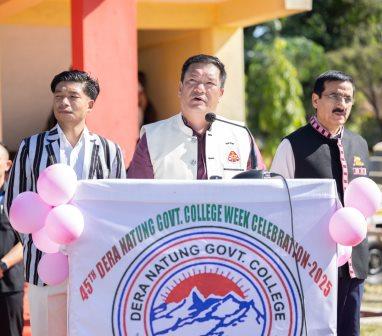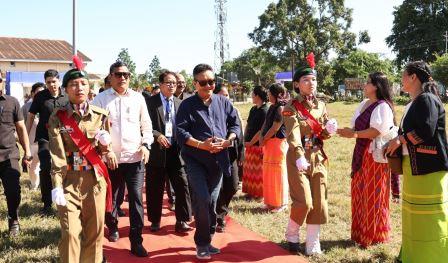-
Cadet death: Family allege harassment by seniors, demands justice
-
APCC raises safety concerns in educational institutions
-
POCSO court sentences man to 20 years in sexual assault…
-
Senior teacher found dead in quarters
-
Air cargo services resume from Itanagar airport
-
Commissioner Finance reviews centrally sponsored schemes in Tirap
-
Cadet death: East Siang Police arrests 3 Sainik School staffers
-
 CM lauds DNGC for contribution to higher education over 46…
CM lauds DNGC for contribution to higher education over 46…
-
 Sona stresses on holistic education to truly nurture future generations
Sona stresses on holistic education to truly nurture future generations
-
High school student found dead in school bathroom, no signs…
Despite repeated appeals from environmental activists to take urgent steps to deal with the escalating problem of climate change, the fact that concrete actions are still pending is apparent from a a national-level climate vulnerability assessment report released by Department of Science and Technology, GoI last Saturday. As per the report a number of eastern states are staring at the negative impacts caused by climate change and it’s distressing to find Arunachal Pradesh in it. Wide-ranging indicators have featured in it covering vital socio-economic aspects and of them, the alarming one relates to agriculture which is the mainstay of the state’s economy. The report, if taken seriously by the state and the Centre should serve as an eye-opener and it needs no reiteration that corrective actions are indeed the need of the hour.
Funded by DST, the 184-page comprehensive document has been prepared by the researchers from the Indian Institute of Science, Bengaluru and IIT Guwahati and Mandi. While noting in clear terms that majority of states in the ecologically fragile Eastern Himalayan Region namely Arunachal Pradesh, Assam, Mizoram, Jharkhand, Odisha, Chhattisgarh, Bihar and West Bengal are currently the most vulnerable when it comes to absorbing the negative after-effects of climate change, the report, thankfully will go a long way in drawing attention of the concerned policy makers regarding the immediate need for prioritizing funding and escalating efforts to tackle the associated risks. Coming to the ‘revelations’ pertaining to Arunachal, the report mentions that despite’s the state’s rainfall is among the heaviest in the country with more than 3500 mm annually, persistent water scarcity, periodic exposure to severe landslides, flash floods and even droughts along with poverty and a non-diversified pattern of livelihood have in combination made the state highly vulnerable to climate change. Keeping in mind that the state’s economy is predominantly agrarian, the report has emphasized on district-wise agricultural vulnerability. From the vulnerability indices (VIs) of the districts in a descending order of severity, it’s Kurung Kumey with 0.741 at the top, followed by Upper Subansiri with 0.669, Anjaw with 0.647, Tirap with 0.640, West Kameng with 0.632, West Siang with 0.631 and ending up with Lohit with 0.411. The report, alike the ones of the kind are packed with figure-supported data which may give an appearance of a highly-technical document. However, while mirroring the state’s current agriculture vulnerability, it has highlighted a number of associated and in a sense perennial shortcomings such as inadequate number of Natural Resource Management (NRM)-based projects under MGNREGA per 1000 ha, low road density, lack of fair price shops, lack of availability of water, both ground water and water bodies, among others.
Hopefully, the report is taken seriously by the concerned departments since counter-measures are urgently needed.

Kenter Joya Riba
(Managing Editor)She is a graduate in Science with post graduation in Sociology from University of Pune. She has been in the media industry for nearly a decade. Before turning to print business, she has been associated with radio and television.
Email: kenterjoyaz@easternsentinel.in / editoreasternsentinel@gmail.com
Phone: 0360-2212313

